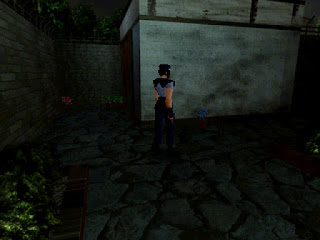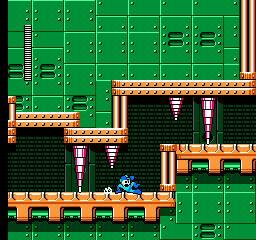Tron
Arcade
Nostalgia Factor:
Mop Up Duty continues with my third and final 1982 video game review. Again, since I’ve never played this game, I don’t have much to say about it as far as nostalgia goes.
I didn’t like the movie Tron, but after hearing positive things about this game I’m hoping my thoughts on it are different. Let’s go find out!
Story:
I’m sure there’s a story to be found in here somewhere, but as I’ve said in my last two 1982 game reviews, a solid storyline was simply not an emphasis back when these games were created. All I know is that this game takes place during the movie Tron. I didn’t understand what the hell was going on in that movie, so I guess I’m glad the story was completely ignored in this game because I wouldn’t have understood what the hell was happening here either!
Gameplay:
Tron consists of a series of four mini games that you have to complete. Once you complete these mini games, you move onto the next “stage” of the game, where you have to complete these mini games again – except this time they are slightly more difficult. Beat them again and you move onto the next stage of the game. Same four mini games, once again more difficult this time around. This was pretty common back in 1982 – looping gameplay where you are basically doing the same thing over and over again, the difficulty increasing with each full turn of the wheel.
Even though this game has just 12 stages (meaning 12 rounds of mini games) it can’t be completed. Once you get to the highest level of difficulty it loops forever. Honestly, I was not able to make it to that last stage. By the time you hit stage five or six these mini games become ridiculously hard to complete. In the original arcade version of the game when you lose all of your lives you go back to the beginning of the game. I’m sure there are some freaks of nature out there that were able to beat this entire game on three lives, but that person is not me. Even using save states to try and cobble together a perfect game, I couldn’t make it past stage 10 or 11. It’s SO hard. You’d have to be a freaking machine to pass these stages.
Anyway, since the meat and potatoes of this game is the mini games, it is time to talk about them. The light cycle mini game takes place from an overhead perspective. You can move your cycle up, down, left, and right. When you move it leaves a trail of light behind you which creates a wall that will kill you if you touch it. It’s your goal to make the opposing racer (or racers as the game gets more difficult) crash into one of these “light walls.” If you hit one of them, you die and lose one of your lives. Once all your enemies crash into them, you win. This mini game in particular can be completed in a matter of seconds depending on your skill level, or lack thereof.
The next mini game also takes place from an overhead perspective. You move a tank around on a Pac Man-like grid where you have to shoot and destroy the other tanks.
The next mini game places you in a space suit inside of a large cone shaped object. You have to blast away at a rotating wall of destructible panels as you attempt to escape the cone.
The last mini game you are once again in your space suit. You have to blast through increasing crowds of spider-like creatures to reach a safe zone in the middle of the screen.
That about covers how these mini games operate, so let’s move onto the graphics, shall we?
Graphics:
This is probably the best looking 1982 game I’ve played. Everything looks pretty basic and oftentimes the backgrounds are just plain black, but that’s okay. While this game isn’t eye popping by any stretch of the imagination, it’s filled with all kinds of vibrant colors. The mini games are well designed visually. In particular I liked the cone stages the best. Again, this game doesn’t look like much by today’s standards but I can imagine in 1982 all the kids were huddled around Tron because of how much better it looked than everything else.
Sound:
No stage music seems to be a theme with these older games. There is a little jingle that plays when you insert a quarter or do something notable, but it’s nothing to write home about. Sound effects are your standard beeps and bloops that were so popular in the early 80s.
Meh.
Overall:
This is probably the best of the 1982 games I have played for Mop Up Duty so far. That’s not really saying a whole lot as nothing I have played from this year has gotten me too excited, but the sheer variety in the gameplay in regards to the four mini games is something that keeps Tron feeling fresh. Whether I was cruising around in my light cycle or blasting away at tanks, I found myself having a pretty good time with this game.
Tron’s fatal flaw is the same as the last two games I reviewed: it gets repetitive fast. Although there is more replay value to be found here than in Satan’s Hollow or Pitfall, I still found myself tiring of the game rather quickly. It also can’t be beaten, which is another complaint of mine. Maybe if the game had ended after 12 stages I would have pushed on and tried to complete it. But it doesn’t, and I can’t state this enough: I don’t care about high scores. I will never get the highest score. I will never be the best. And even if I do get an absurdly high score for some reason, I really don’t care nor do I know anyone who would. Just let me beat the game and move on. Sadly, you can’t do that here – nor with any of the 1982 games I have played and reviewed.
Hopefully 1983 brings us to bigger and better things.
Overall:
C+
40th Birthday Mop Up Duty Celebration Tour:
1982 Reviews:
For a complete index of all my past posts and game reviews, click
>HERE<













































